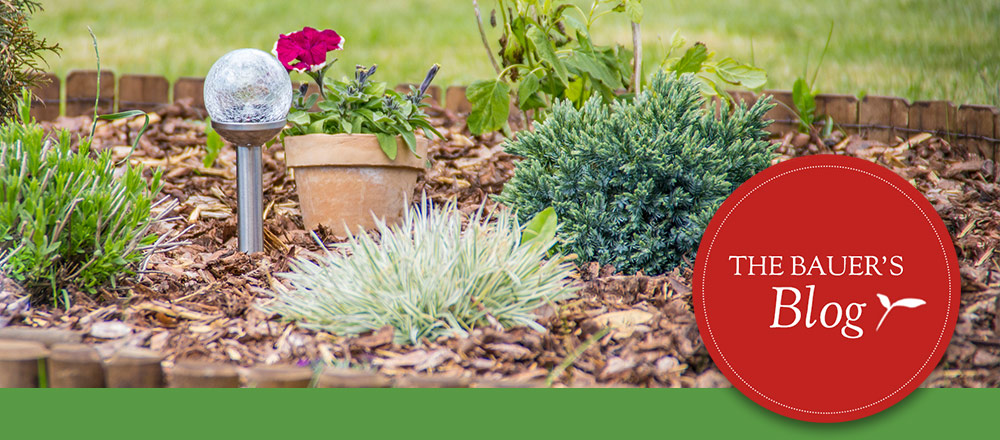Can you even call yourself a Midwesterner without a healthy love of potatoes? Whether covered in butter and cheese, made into french fries, or simply boiled with salt, these tubers are one of the most beloved vegetables on any household dinner table. However, before a potato can become the foundation of our favorite hearty recipe, they need a place to grow. And the perfect place to do so? Right in your garden!
An old wives’ tale suggests that potatoes must be planted on Good Friday in order to grow; Good Friday is only a few days away. In reality though, the window to plant potatoes is a little wider. However, if you have the day off and time to spare, there’s no reason not to spend it planting some potatoes! Here’s how to grow potatoes at home:

Choosing Seed Potatoes
While you may see a few eyes emerging on the last few potatoes in the bag from the supermarket, it’s best to source potatoes from a garden center. Potatoes sold for consumption are treated with preservatives to prevent the potatoes from developing while in storage. We carry several varieties of quality seed potatoes that have been properly grown and stored for home-growing garden purposes.
Choose seed potatoes that are firm to the touch, without soft or moldy areas. A good sign to look for is the presence of many eyes sprouting from the surface of the seed potato. Each eye is capable of sprouting into a new plant, so the more eyes they have, the more potatoes you can harvest by the end of the season.
Preparing to Plant Potatoes
Before planting, cut the seed potatoes into pieces with 2-3 healthy-looking eyes per piece. Some folks believe that allowing them to harden off for a day before planting can help them withstand disease. We recommend this step, but it is optional. Many gardeners simply plant the pieces right away after cutting, which is fine too.

How to Plant Potatoes in the Garden
When it comes to planting potatoes in the garden, there are a few elements to consider to ensure the best performance. Primarily, the soil in your garden has been exposed to all manner of elements that may have thrown the acidity off from a desirable level or infiltrated the area with weed seeds or pests.
Potatoes prefer a slightly acidic environment. If a soil test indicates your potato plot is a little too alkaline, mix in some peat moss to increase the acidity. Peat moss also has the advantage of being a lightweight material that allows water to pass through easily, which makes it an ideal medium for your potato plants. A few spruce needles blended into the soil are also helpful for maintaining a desirable pH balance.
Plant your spuds about four inches below the surface of the soil, and about 18” apart, to give them enough space to grow. If disease is a concern, you can dust the potato plants with sulphur before planting. Sulphur should be handled very carefully, so read the instructions before use for advice on proper handling.
Choose a fertilizer that is higher in the first two numbers (nitrogen and potassium). Potato crops respond well to crop rotation, as some diseases and insects can colonize and grow stronger the following year. Choose a different location to grow your potatoes every year. If you grow legumes, such as bean or peas, growing your potatoes where your legumes once were allows the potato crop to use the nitrogen deposited into the soil by the legume crop!

Growing Potatoes in Containers
Growing potatoes isn’t only for those with sizeable yards. You can actually start a potato garden with a smaller footprint by planting potatoes in containers!
You’ll need good-size planters—about 3 gallons each—for each piece of seed potato you plant. Fill the planters about a quarter of the way full with a coarse medium, like river rocks, that will promote that excellent drainage. Then, fill them within about three inches from the top with sterile potting soil and plant your seed potato pieces about 4 inches below the surface of the soil. Ensure the planters have plenty of drainage holes and water them well. Treat them with a high-nitrogen fertilizer after the true leaves have sprouted, and again a little over a month later.
Caring for Potato Plants
Potatoes are a fairly tough crop, and don’t require much upkeep as they grow steadily below the soil. The most important step to caring for potatoes is to mound them throughout the growing season, whether you’re growing your potatoes in containers or in the ground. Once the potato plant shoots reach 6” in height, mound over them with loose soil. The more you mound over the potatoes, the more productive they’ll get.
Once the potato plant begins to flower, you can stop mounding and start waiting. When the plant begins to die in the fall, it’s time to harvest. You can simply reach underground and pull those lovely potatoes out of the ground.
If you can’t wait until the fall, you can start harvesting a few potatoes shortly after the first flower. These potatoes will be small, but they’ll also be wonderfully tender. New potatoes are fabulous on the grill with a little olive oil and salt. If you prefer a larger potato for broiling or baking, a later harvest is the way to go. All you need is a little patience, and before you know it, you’ll be ready to dig in!







Leave A Comment